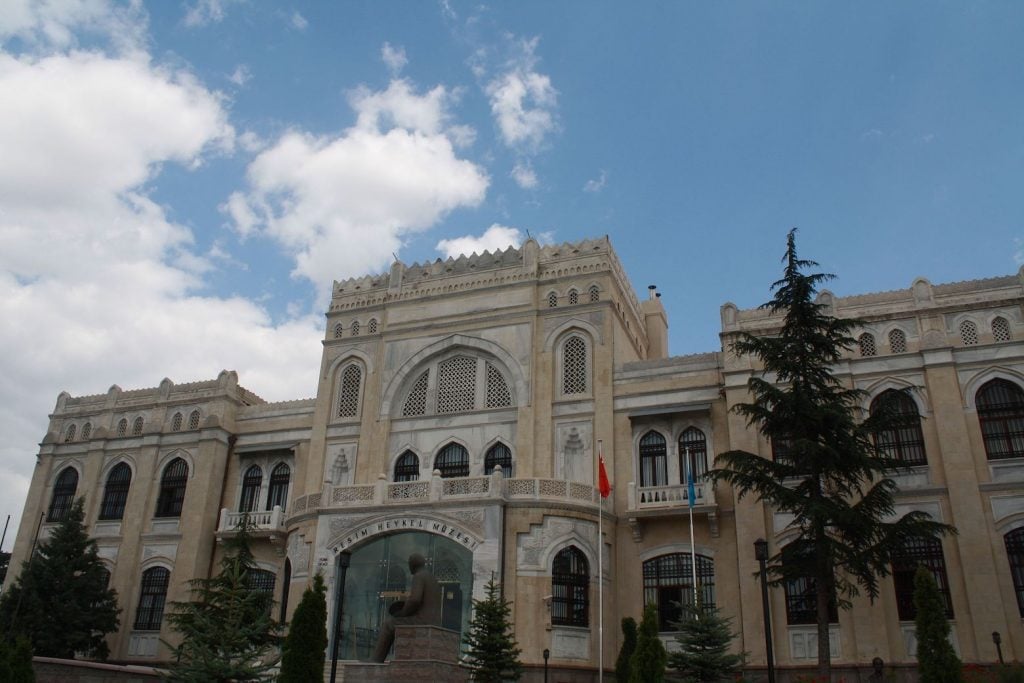Law & Politics
$250 Million Turkish Museum Heist Was an Inside Job
An anonymous antiques dealer came forward to expose the perpetrators.

An anonymous antiques dealer came forward to expose the perpetrators.

Alexander Forbes

An anonymous caller has cracked open an organized crime syndicate that stole up to 302 works of art from Turkey’s State Art and Sculpture Museum, located in the capital, Ankara. According to a report in the Hurriyet Turkish newspaper, three individuals from the group have been arrested thus far. Fifteen remain on the run.
The arrests came courtesy of an anonymous phone call to the Turkish culture minister Ertuğrul Günay. The witness, said to be an antiques dealer himself and referred to by the pseudonym “Daylight,” has revealed extensive details about the operation. Ahmet Sarı, allegedly the group’s leader, an antiques dealer called Mete Aktuna, and one of the museum’s security officers, Veli Topal, are currently in custody, according to the Hurriyet. Allegedly, the witness says, the gang has earned approximately $250 million through the scheme thus far.
The group of criminals and museum officials are believed to have stolen the trove of artworks and antiques from the State Art and Sculpture Museum between 2005 and 2009. According to a review of their holdings, conducted by the museum after news of the heist broke in 2012, 46 of those works were replaced by fakes and 30 were of dubious authenticity. The others were simply removed from the museum’s storage facilities. At the time, popular criticism poured out that the museum’s inventory systems were inadequate given the importance of its collections. Similar claims have been recently lodged against the Prado museum in Madrid (see: “885 Artworks Missing from Madrid’s Prado Museum“).
Swapped Originals
According to “Daylight,” the group of criminals brought forgers from Ukraine’s Aivazovsky Painting Academy into Turkey in order to produce the fakes they eventually swapped for the museum’s originals. Speaking to the Hurriyet, the source claims that Sarı explained the thieves’ methods to him in great detail.
“Daylight” says that after the originals were removed from the museum, the group “sold them to famous businessmen through mediators and antique dealers known in their fields.” The source claims to have been approached by Sarı, presumably to participate in the scheme, and that he was later threatened with death if he exposed the organization’s activities.
The scheme is said to have reached to the very highest levels of the Turkish State Art and Sculpture Museum’s leadership, according to “Daylight”: “The female deputy director of the museum proposed Sarı to sell the original works in the museum’s depot.”
Among those works allegedly given up by the deputy director was the heist’s most high-profile grab, an oil painting by Turkish artist Hikmet Onat. “Sarı sold it to an antique dealer in Nişantaşı for $210,000 and the antique dealer sold it to a famous businessman for $350,000,” “Daylight” tells the paper, adding that the businessman still owns the painting. “Another painting by Vecihi Bereketoğlu was also sold to an auctioneer and the auctioneer sold it to the son of a famous businessman,” the witness continues.
According to a police report obtained by the Hurriyet, several of the stolen works have been recovered since their investigation began, but the vast majority remain unaccounted for.